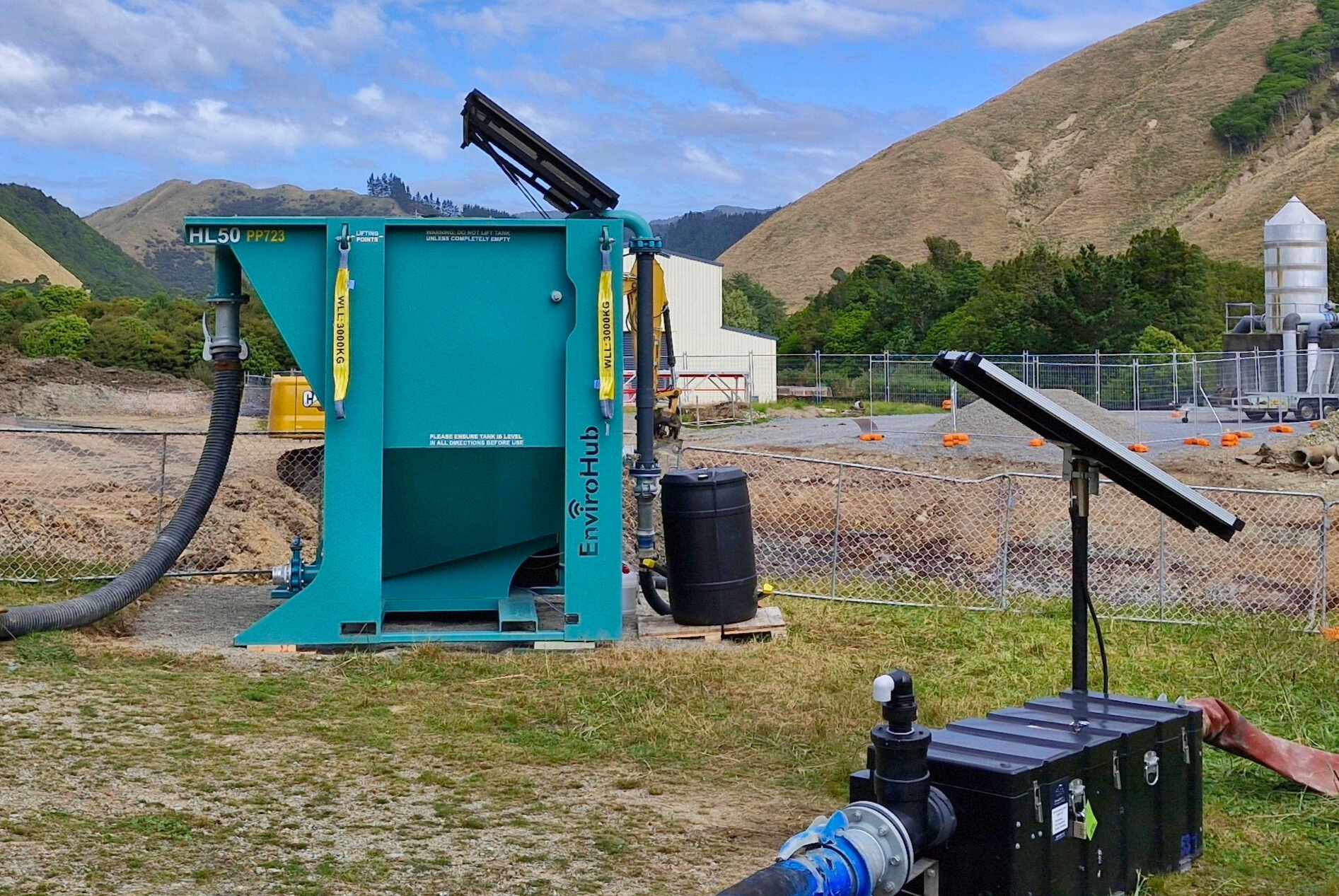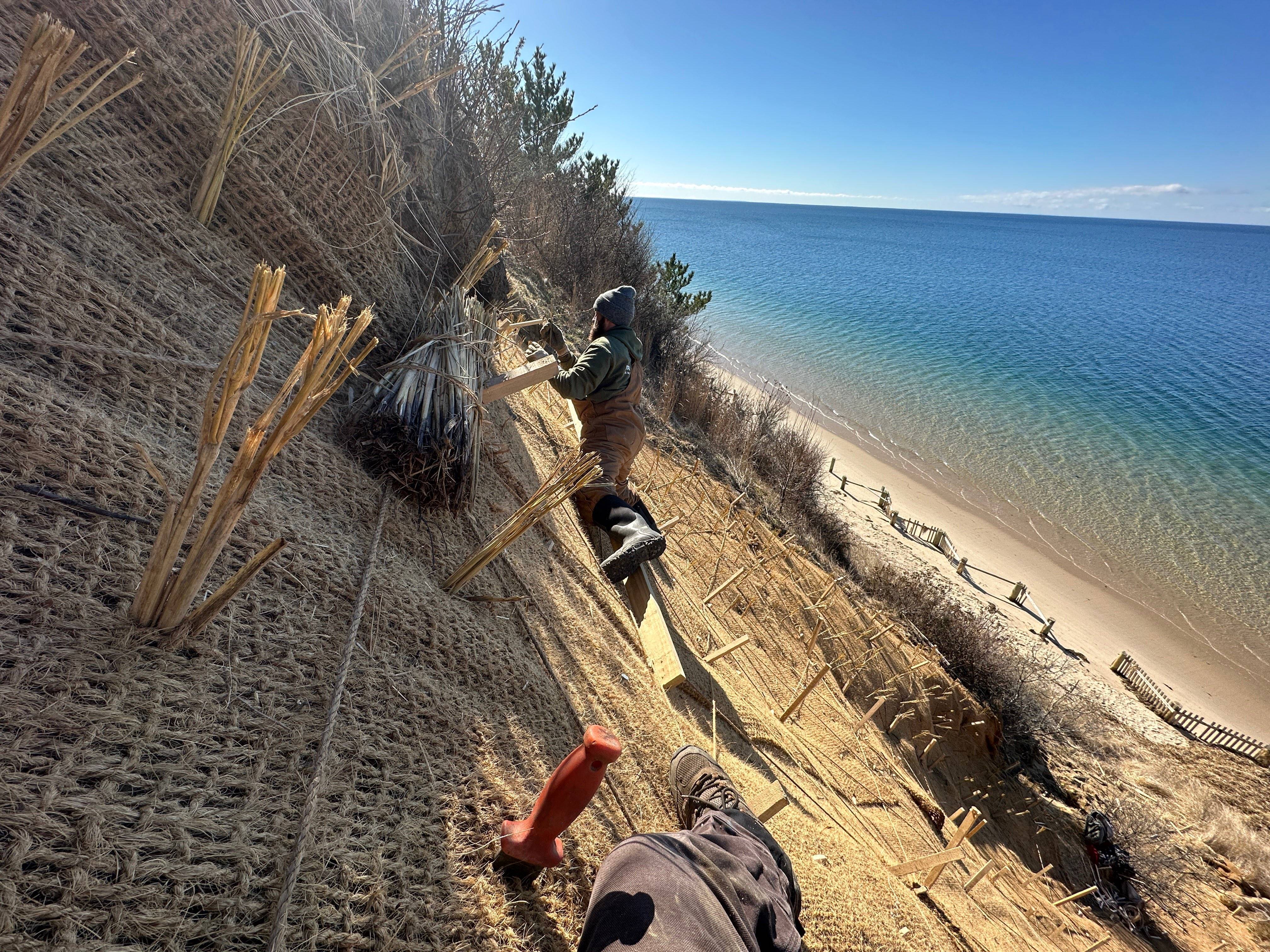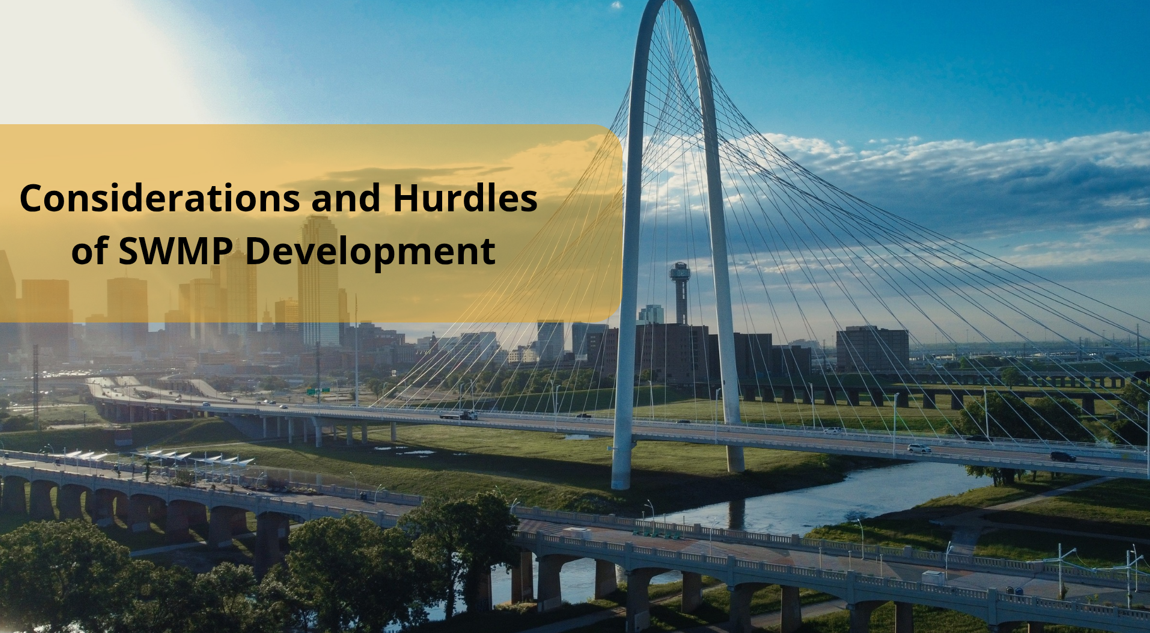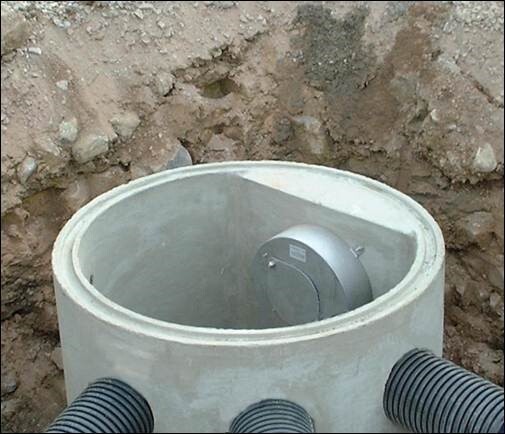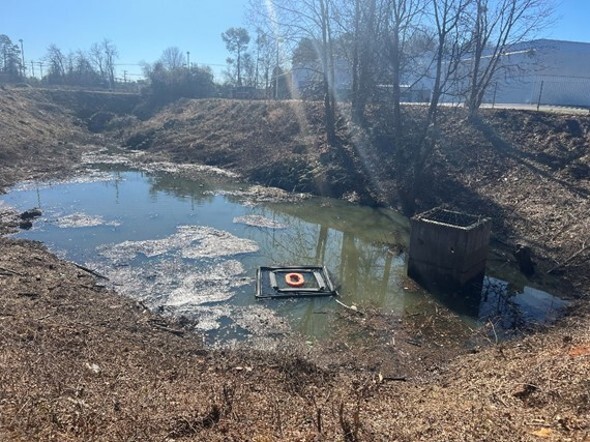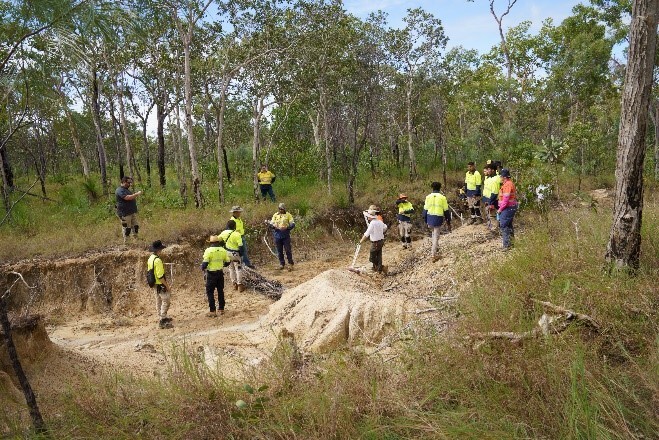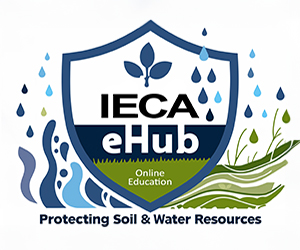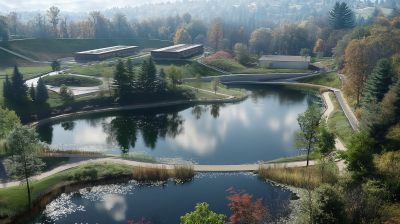
Catalog Advanced Search
-
Contains 3 Component(s), Includes Credits Includes a Live Web Event on 2025/07/17 at 5:00 PM (MDT)
This session will explore the practical benefits and technical details of small-footprint, mobile inclined-plate settling tanks (Lamella Clarifiers) in major earthworks projects across New Zealand. We'll address the challenges posed by NZ's remote and hilly terrain, and demonstrate how these tanks can enhance time, cost, performance and reporting efficiency during rain events, especially when discharging to sensitive natural waterways. Using the post-cyclone Gabrielle recovery and repair of Brynderwyn Hill on SH1 (NZ's main highway) as a case study, we'll fill knowledge gaps regarding the mobility, performance, and deployment of these tanks in adverse weather conditions.
Maintaining Safe Discharge in Severe Weather Events – A Use Case for Incline Plate Settling Tanks
Date: Friday 18th July (Aust/NZ) |Thursday 17th July USA
Time: 9am AEST | 11am NZ | 5pm MTPresented by: Ella Harford, Environmental Advisor, Fulton Hogan and George Everest, Hire Manager, Prime Fluid Management
Level: Intermediate
Duration: 1 hour
Type of Course: Webinar - LiveJoin our webinar to discover how small-footprint, mobile inclined plate settling tanks (Lamella Clarifiers) can enhance efficiency during rain events, especially when discharging to sensitive natural waterways.
We'll use the post-cyclone Gabrielle recovery on the main arterial route to northern New Zealand (SH1 at Brynderwyn Hill) as a case study to illustrate their mobility, performance, and ease of deployment. Learn how 100% solar-powered units with advanced monitoring capabilities can support your projects in remote areas. Gain valuable insights into overcoming the challenges posed by remote or hilly terrain. Don't miss this opportunity to improve your project outcomes—sign up today.Learning Objective:
• Understanding how contemporary incline plate settling tanks operate
• Understanding of the use case for incline plate settling when space, transit, and economics impact on traditional ESE measures
• Ability to weigh the benefits of ponds and LDBs versus Incline Plate Settling as part of the ESE design and planning process
• Practical insight into handling rainwater in an environmentally sensitive, geographically constrained area
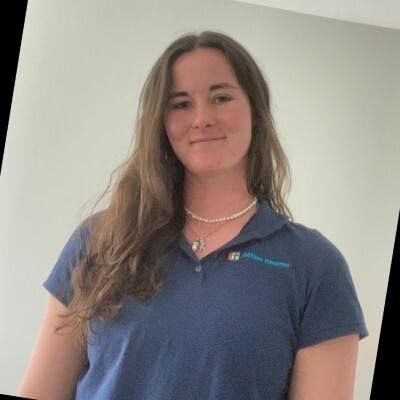
Ella Harford
Environmental Advisor
Fulton Hogan
Ella serves as the Environmental Advisor for Fulton Hogan's civil projects located within Auckland and Northland. In her role, she supports environmental management and compliance across a diverse array of civil infrastructure projects. These projects include the construction of bridges, boardwalks, reservoirs, and pump stations, as well as the Brynderwyn Hill Recovery works and over 20 retaining walls under New Zealand's emergency works framework.
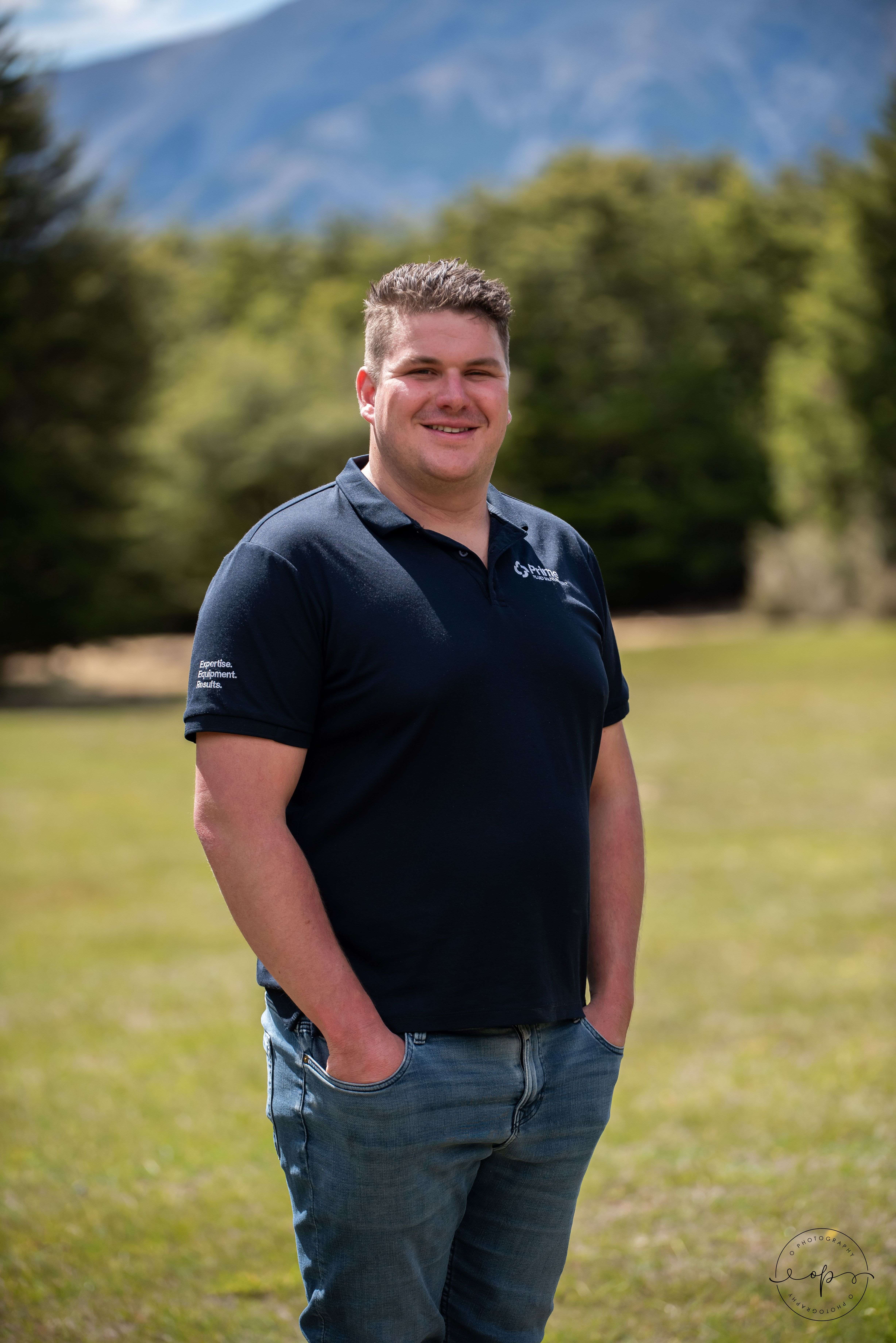
George Everest
Hire Manager
Prime Fluid Management
George is passionate about water treatment and discharge compliance within the civil construction sector. Since joining Prime Fluid Management from school five years ago, he gained experience and expertise through extensive in-house training. George specializes in mobile pump and water treatment products, focusing on solution design and deployment to ensure projects meet compliance and water discharge consent requirements. His dedication and hands-on experience make him a valuable asset in the field of water resources and environmental management.
This event is worth one (1) Professional Development Hours.
IECA is committed to fostering an environment of continuous learning and professional growth. Through a process of peer review and content selection standards, we ensure that our content is robust, relevant, and aligned with industry standards. We respect the authority of certification organizations to evaluate and accept professional development activities according to their criteria, acceptance of professional development credits is at the discretion of your certifying organization.
-
Register
- Non member - $40
- Professional member - $15
- Professional Plus member - Free!
- Professional Plus Org member - Free!
- Student member - $15
- Young Professional member - $15
- Emeritus member - $15
- Discounted Professional member - $15
- Australia Member - $15
- Australia Non-Member - $40
- Australasia Professional Plus - Free!
- More Information
-
Register
-
Contains 4 Component(s), Includes Credits
Coastal erosion poses a significant threat to the stability of our shorelines, impacting ecosystems, communities, and economies worldwide. Traditional approaches to combating erosion often involve hard infrastructure such as seawalls and revetments, which can have detrimental effects on coastal ecosystems and fail to address the root causes of erosion. In this webinar, we will explore alternative, ecologically friendly solutions for mitigating coastal erosion.
Nurturing Nature: Ecologically Sound Solutions to Coastal Restoration
Presented by: Stephanie Greaves, Account Manager, Crawford Land Management
Level: Intermediate
Duration: 1 hour
Type of Course: Webinar - On demandCoastal erosion threatens the stability of our shorelines, endangering ecosystems, communities, and local economies. This talk introduces ecologically friendly, nature-based solutions that move beyond traditional hard infrastructure like seawalls, which can harm coastal environments. Drawing from real-world examples from the delicate coast of Massachusetts, we’ll explore methods such as beach nourishment, dune restoration, living shorelines, and salt marsh conservation. These approaches not only combat erosion effectively but also enhance habitats and provide recreational benefits. The speech also highlights the importance of community engagement and cross-sector collaboration in creating lasting, sustainable change. Attendees will leave inspired to rethink coastal protection by working with nature to build resilience and protect our shores for future generations.
Learning Objective:
Upon completion, participants will be able to identify both traditional and new, eco-friendly erosion control solutions. They will be able to recognize the positive and negative impacts of both.
Upon completion, participant will be able to grasp the significance of community engagement and stakeholder collaboration in implementing sustainable coastal management strategies and be inspired to take action.
Upon completion, participant will be able to understand the principles of nature-based coastal protection and the importance of working with natural processes to combat erosion.

Stephanie Greaves,
Account Manager,
Crawford Land Management
Stephanie is a passionate advocate for environmental conservation and sustainability, with a focus on coastal ecosystems and resilience. Born and raised by the sea, Stephanie developed a deep appreciation for nature from a young age, sparking a lifelong commitment to protecting our planet's precious resources.
With a strong belief in the power of collaboration and community engagement, Stephanie has actively worked alongside local stakeholders, government agencies, and non-profit organizations to implement sustainable solutions for coastal management. Professionally, Stephanie has ten years of experience in ecological restoration. She has contributed to her field through publications, presentations, and projects aimed at raising awareness and fostering action towards a more resilient future for our coastlines.
In addition to her professional endeavours, Stephanie is passionate about hiking, traveling, baking, and spending time with her family. She actively volunteers for a variety of organizations, with a particular interest in education and animal welfare.
Stephanie is committed to making a positive impact on our ecosystems through innovative and sustainable ecological restoration projects, striving to find environmentally friendly approaches that balance the needs of both nature and human communities. She continues to seek out opportunities to educate and share green approaches to coastal resiliency, aiming to make a positive impact on the globe.This event is worth one (1) Professional Development Hours.
IECA is committed to fostering an environment of continuous learning and professional growth. Through a process of peer review and content selection standards, we ensure that our content is robust, relevant, and aligned with industry standards. We respect the authority of certification organizations to evaluate and accept professional development activities according to their criteria, acceptance of professional development credits is at the discretion of your certifying organization.
-
Register
- Non member - $40
- Professional member - $15
- Professional Plus member - Free!
- Professional Plus Org member - Free!
- Student member - $15
- Young Professional member - $15
- Emeritus member - $15
- Discounted Professional member - $15
- Australia Member - $15
- Australia Non-Member - $40
- Australasia Professional Plus - Free!
- More Information
-
Register
-
Contains 4 Component(s), Includes Credits
As population sizes increase in urban areas, more organizations are required to develop MS4 SWMP plans. Advanced preparation could help organizations highlight potential budgetary, personnel, equipment, and monitoring needs as well as the need to learn from other organizations. With proper planning, MS4s can implement innovative and cost-saving solutions.
Considerations and Hurdles of SWMP Development
Presented by: Amesha Morris, Stormwater Knowledge Manager, Acorn EnviroComply LLC
Level: Intermediate
Duration: 1 hour
Type of Course: Webinar - On DemandIn the stormwater trifecta (construction, industrial, MS4) MS4 stormwater concerns tend to be broad, regional, and complex. For municipalities with rapidly growing populations that will see a levelling up in stormwater regulatory requirements, proactive planning and staged implementation are needed. This webinar will provide resources and first-hand experience in SWMP development, inter-departmental collaboration, and program management. MS4 professionals will gain access to free resources to help with SWMP development, address C-suite common questions, and potential community impacts. Our community will be given the opportunity to provide additional resources, stories, or templates that may assist others.
Learning Objective:
1. MS4 professionals will be able to identify potential areas of consideration as they prepare to develop or level up their municipal SWMP.
2. Stormwater professionals will develop a "game plan" to identify and incorporate external and inter-departmental organizations in the planning phase.
3. MS4 professionals will be able to create a general timeline of action that will address personnel, budget, equipment, and other regulatory requirements.

Amesha Morris
Stormwater Knowledge Manager
Acorn EnviroComply LLC
Amesha Morris is a stormwater professional with over 15 years of experience in construction, industrial, and MS4 stormwater. After graduating from the University of North Texas with a B.S. in Biology and an M.S. in Environmental Science, Ms. Morris embarked on her stormwater career journey. Beginning as an intern, and progressing to the roles of stormwater inspector, specialist, and administrator manager, where she saw the need for quality professional development and began a new journey.
This event is worth one (1) Professional Development Hours.
IECA is committed to fostering an environment of continuous learning and professional growth. Through a process of peer review and content selection standards, we ensure that our content is robust, relevant, and aligned with industry standards. We respect the authority of certification organizations to evaluate and accept professional development activities according to their criteria, acceptance of professional development credits is at the discretion of your certifying organization.
-
Register
- Non member - $40
- Professional member - $15
- Professional Plus member - Free!
- Professional Plus Org member - Free!
- Student member - $15
- Young Professional member - $15
- Emeritus member - $15
- Discounted Professional member - $15
- Australia Member - $15
- Australia Non-Member - $40
- Australasia Professional Plus - Free!
- More Information
-
Register
-
Contains 4 Component(s), Includes Credits
Historically limited by scalability and reliability issues, chitosan-based biocoagulants are now a robust solution, made possible through advanced formulations and rigorous U.S. based manufacturing standards. With the highest rating under the EPA's Safer Choice certification, chitosan presents a non-toxic, highly effective option that consistently performs in diverse stormwater systems, providing a green pathway to reduce pollutants and protect aquatic ecosystems. This interactive presentation will dive deep into a case study involving a meat packaging facility in Georgia where stormwater is also being treated int he same system. Chitosan-based biocoagulants replaced aluminum and caustic chemicals in their onsite activated sludge wastewater treatment facility.
Chitosan Biocoagulants: Improving the Safety, Economics, and Environmental Impacts of an Open Air Activated Sludge System in Georgia
Presented by: Jenn Wood, Global Key Account Manager, Tidal Vision
Level: Intermediate
Duration: 1 hour
Type of Course: Webinar - On DemandThe transition from traditional aluminum-based coagulants to biocoagulants presents an impactful and sustainable shift in water treatment. Chitosan, a biopolymer derived from upcycled waste materials, is redefining the approach to stormwater treatment by offering a powerful and environmentally friendly alternative to traditional coagulants.
Faced with high levels of total suspended solids (TSS) and significant sludge accumulation, the facility needed a solution that could meet strict environmental standards while improving operational efficiency. Chitosan provided exactly that, reducing TSS to a small fraction of site limits, cutting sludge production by up to 91%, and dramatically decreasing the overall chemical usage by over 90%. This shift not only enhanced treatment efficiency but also reduced labor, transportation needs, and the physical strain on machinery - all without the health hazards associated with traditional coagulants.
Learning Objective:
1️⃣ Understanding that safe, modern cationic biocoagulants are situated to take the lead in stormwater and wastewater treatment/remediation.
2️⃣ Understanding the benefits of utilizing chitosan solutions in a wastewater or stormwater treatment system.
3️⃣ Understanding why offsetting harsh chemistries in wastewater and stormwater treatment systems is essential, especially in the face of regulatory shifts.

Jenn Wood
Global Key Account Manager
Tidal Vision
Jenn Wood has a dynamic leadership career developing customized programs championing environmental and social responsibility. She leads key global accounts for water treatment through dedicated customer relationships and collaborative solutions. She holds a Master's degree in Urban and Environmental Policy and Planning from Tufts University and a dual Bachelor's degree in Outdoor Education as well as (self-designed) Sustainability and Education from Northland College. Jenn lives in VT, spending time outside biking, kayaking, sailing and skiing.
This event is worth one (1) Professional Development Hours.
IECA is committed to fostering an environment of continuous learning and professional growth. Through a process of peer review and content selection standards, we ensure that our content is robust, relevant, and aligned with industry standards. We respect the authority of certification organizations to evaluate and accept professional development activities according to their criteria, acceptance of professional development credits is at the discretion of your certifying organization.
-
Register
- Non member - $40
- Professional member - $15
- Professional Plus member - Free!
- Professional Plus Org member - Free!
- Student member - $15
- Young Professional member - $15
- Emeritus member - $15
- Discounted Professional member - $15
- Australia Member - $15
- Australia Non-Member - $40
- Australasia Professional Plus - Free!
- More Information
-
Register
-
Contains 4 Component(s), Includes Credits
Detention is an extremely important factor in flood management, it is also expensive, yet we use flow control technology that is hundreds of years old to size and manage these systems. The reason? Designers are not aware that there are viable alternatives that are easy to use and very effective at optimizing detention systems. This presentation will highlight alternative flow controls that employ vortex flow control system and case study projects that have gained significant benefits from the use of these advanced passive controls, including significant cost reductions.
Optimizing Detention for Cost and Effectiveness Using Vortex Flow Controls
Presented by: Phillip Taylor. Technical Manager, Oldcastle Infrastructure, CPSWQ
Level: Intermediate
Duration: 1 hour
Type of Course: Webinar - On DemandDetention is an extremely important factor in flood management, it is also expensive, yet we use flow control technology that is hundreds of years old to size and manage these systems. The reason? Designers are not aware that there are viable alternatives that are easy to use and very effective at optimizing detention systems. This presentation will highlight alternative flow controls that employ vortex flow control system and case study projects that have gained significant benefits from the use of these advanced passive controls, including significant cost reductions.
Learning Objective:
- Awareness of the implications of different flow controls on the detention system.
- Understanding of storm hydrographs and relationship to flow controls to minimize detention size and cost.
- Knowledge of how to design using vortex flow controls in common modelling software.
Hosted by:

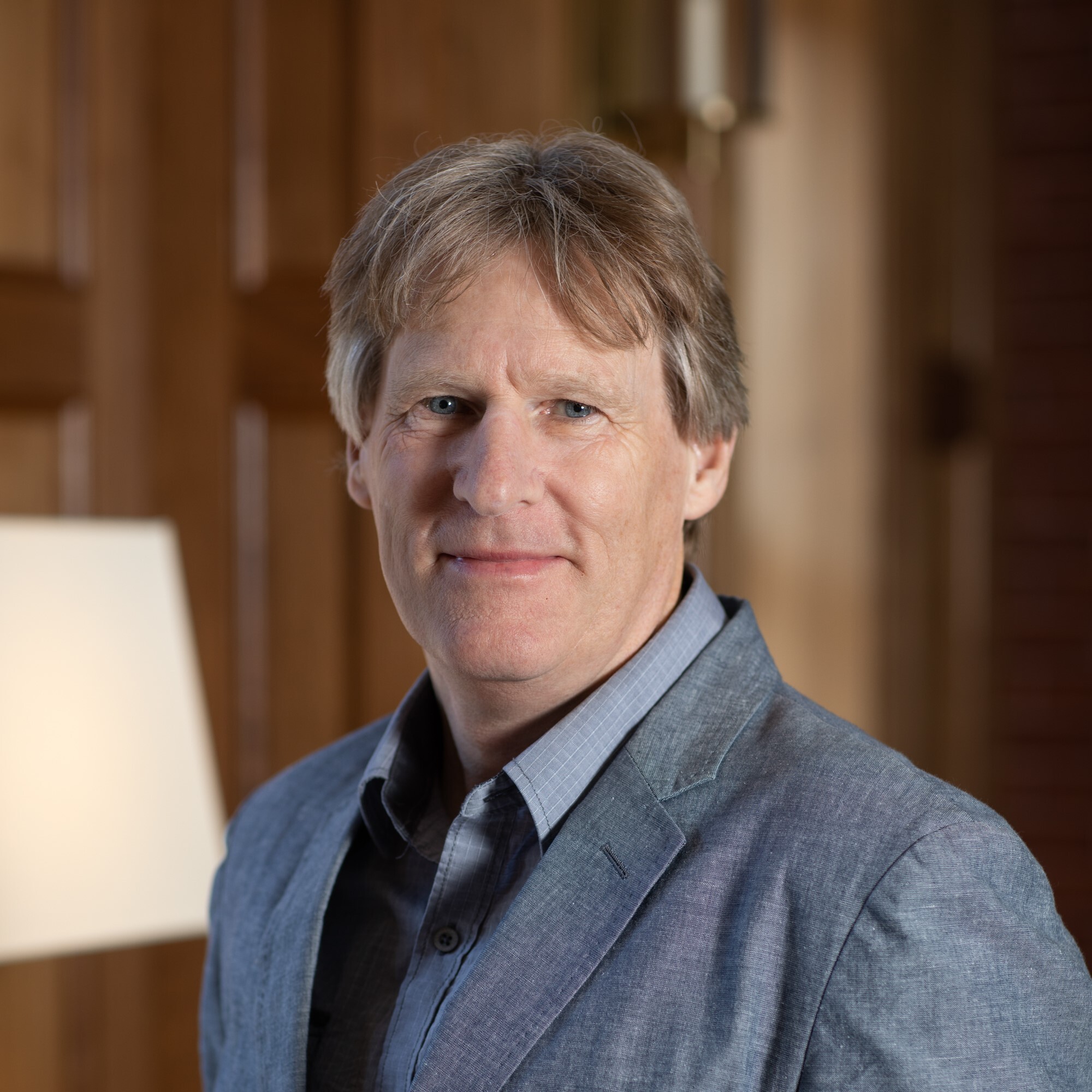
Phillip Taylor
Technical Manager, CPSWQ
Oldcastle Infrastructure,
Phillip Taylor is a New Zealand trained Civil Engineering Associate with extensive experience in the field of stormwater treatment systems. Taylor has worked in both the private and public sectors, in New Zealand, England and the USA. His career has seen him working in soil and water conservation, municipal engineering, including water supply, wastewater and road projects. Over the later part of his career Taylor has broadened his experience to building products manufacturing, sales, and marketing. As Oldcastle's Technical Manager his work focuses on developing job specific solutions, education and training, and product innovation. Taylor has a keen interest in new technology and adaptive solutions for stormwater management. Outside of work Taylor enjoys adventure racing, and road and gravel bike riding, especially when combined with a road trip to someplace new.
This event is worth one (1) Professional Development Hours.
IECA is committed to fostering an environment of continuous learning and professional growth. Through a process of peer review and content selection standards, we ensure that our content is robust, relevant, and aligned with industry standards. We respect the authority of certification organizations to evaluate and accept professional development activities according to their criteria, acceptance of professional development credits is at the discretion of your certifying organization.
* EnviroCert International has listed this webinar as acceptable professional development.
-
Register
- Non member - $40
- Professional member - $15
- Professional Plus member - Free!
- Professional Plus Org member - Free!
- Student member - $15
- Young Professional member - $15
- Emeritus member - $15
- Discounted Professional member - $15
- Australia Member - $15
- Australia Non-Member - $40
- Australasia Professional Plus - Free!
- More Information
-
Contains 4 Component(s), Includes Credits Recorded On: 2025/03/13
Join us to learn about flaws with existing detention pond design methodology and how the concept of utilizing filtration with ponds can improve pond function. This new concept can provide higher treatment rate of more of the annual rainfall and do so with a smaller pond. Sound too good to be true? Its not and we have testing to prove it!
Combining Ponds & Filtration to Achieve Enhanced Water Quality
On-Demand
Presented by: Jamie McCutchen, President, Rymar Waterworks Innovations
Level: Intermediate
Duration: 1 hour
Type of Course: On-DemandDetention ponds are the most common Stormwater Management BMP and are often the primary method to provide post-construction water quality for new development. Although widely accepted, there are many flaws with the traditional "first-flush" design methodology. These include limited treatment for smaller storm events and requiring pond size to be larger than necessary. This presentation will introduce a new methodology to incorporate filtration with stormwater basins and explain how it can result in treatment of more of the annual rainfall, higher TSS removal efficiency and do so with smaller basins.
Learning Objective:
1️⃣Understand flaws with current design methodology for stormwater basins
2️⃣ Introduce the concept of using filtration in place of the traditional first-flush method
3️⃣Understand the benefits of the new technology, including treatment of more of the annual rainfall.
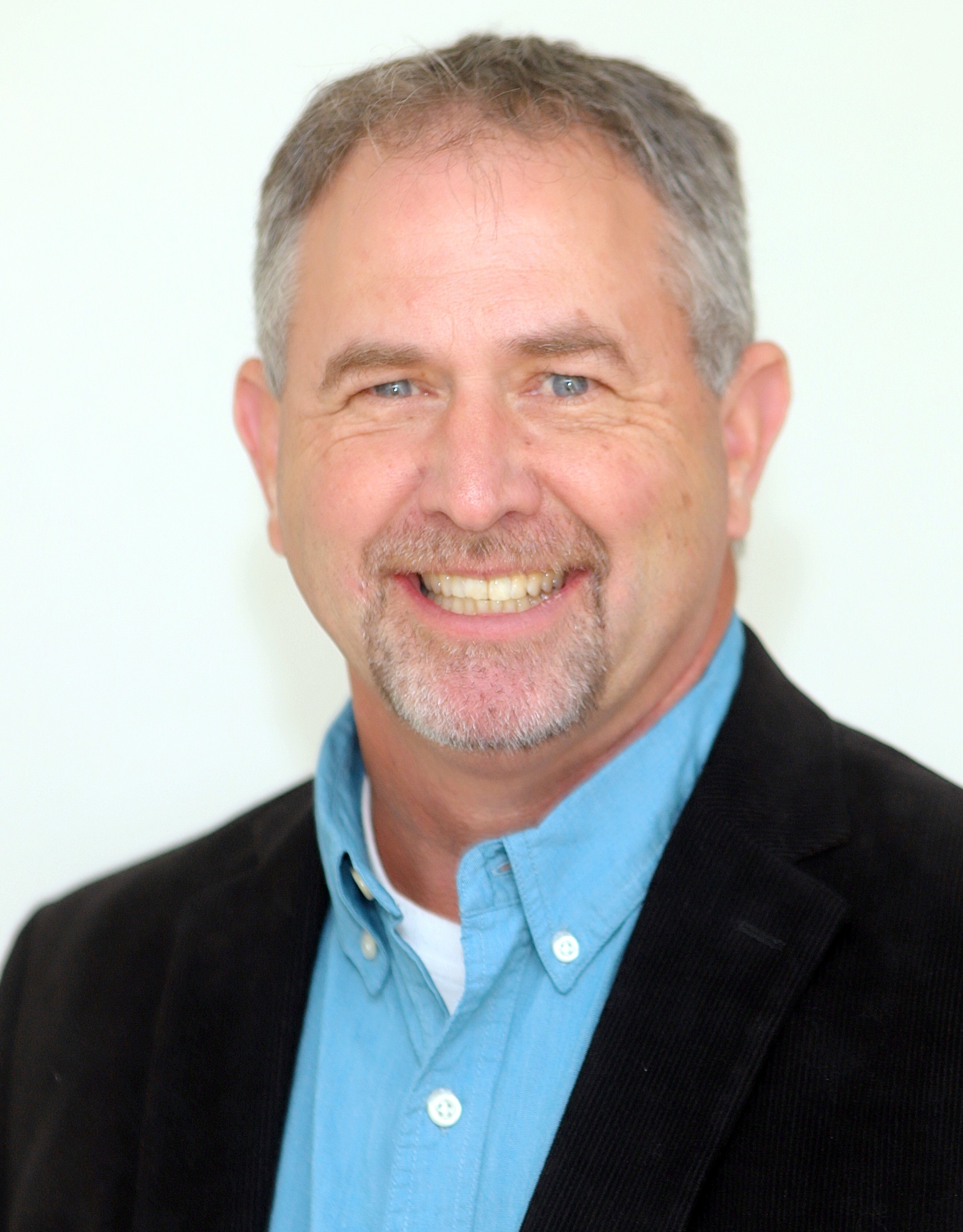
Jamie McCutchen, PE
President
RYMAR Waterworks Innovations
Jamie McCutchen is Principal & Founder of Rymar Waterworks, formerly SW Products. Jamie also founded CCAD Engineering in 1999 to provide land development related civil engineering services. CCAD was acquired by Davis & Floyd in 2018 and Jamie currently serves as a Senior Project Manager, as well as assisting in Business Development. Jamie graduated from Clemson University in 1992 with a BS in Civil Engineering. He is a licensed Professional Engineer in SC, NC, & GA. He is also a member of IECA, SESWA, and ASTM. His expertise is in site planning and development with an emphasis on stormwater management.
This event is worth one (1) Professional Development Hours.
IECA is committed to fostering an environment of continuous learning and professional growth. Through a process of peer review and content selection standards, we ensure that our content is robust, relevant, and aligned with industry standards. We respect the authority of certification organizations to evaluate and accept professional development activities according to their criteria, acceptance of professional development credits is at the discretion of your certifying organization.
-
Register
- Non member - $40
- Professional member - $15
- Professional Plus member - Free!
- Professional Plus Org member - Free!
- Student member - $15
- Young Professional member - $15
- Emeritus member - $15
- Discounted Professional member - $15
- Australia Member - $15
- Australia Non-Member - $40
- Australasia Professional Plus - Free!
- More Information
-
Register
-
Contains 4 Component(s), Includes Credits Recorded On: 2025/03/05
Recent wildfires in Southern California have necessitated a rapid post-fire response to address hazards related to debris flows, flooding, and erosion. This webinar will provide an overview of post-fire hazards and mitigation measures that can be implemented to reduce risk in a post-fire setting.
Post-wildfire Hazards and Mitigation Measures
On-Demand
Presented by: Dr. T. Andrew Earles, PhD, PE, PH, D.WRE; Marta Alvarez, PE, RCE & PLS; Blanca Hoffmeier
Level: Intermediate
Duration: 1 hour
Type of Course: On-DemandWildfires in Southern California at the end of 2024, shortly before the onset of the rainy season set the stage for significant runoff and erosion as atmospheric rivers track across the region over the remainder of the rainy season. In mid-February, a storm with rainfall intensities on the order of an inch per hour triggered debris flows in recently burned areas that affected downstream urban areas. This webinar will discuss post-fire hydrologic hazards including debris flow, flooding, erosion, and water quality. The presenters will also discuss mitigation measures that can be implemented to reduce risk and the importance of warnings and evacuation orders.
View the Full Watershed Emergency Response Team (WERT) 2025 Palisades Fire Report.
Learning Objective:
1️⃣ Understand hydrologic effects of wildfires due to changes in vegetation and soils.
2️⃣ Learn about resources to identify post-fire hazards and values at risk.
3️⃣ Gain knowledge of a variety of post-fire mitigation measures that can be implemented to reduce risk following a fire.Free to Attend
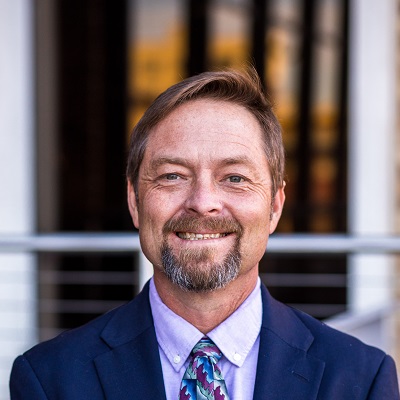
Dr. T. Andrew Earles, PhD, PE, PH, D.WRE
Vice President
Wright Water Engineers, Inc.
Dr. Andrew Earles is the Vice President of Water Resources with Wright Water Engineers, Inc. (WWE) in Denver, Colorado. Andrew has worked for WWE for 22 years since receiving his doctorate on projects related to stormwater management, hydrology, hydraulics, water quality, flooding, and related topics. While most of Andrew’s projects are in the western U.S., he has performed work around the work related to stormwater management and flooding at World Heritage Sites in Peru, Cambodia, Thailand, China, and Iraq. Andrew has conducted risk assessments of post-fire hydrologic hazards across the western U.S. including the Cerro Grande fire that threatened facilities at Los Alamos National Laboratory, the Fourmile Canyon fire in Boulder, and more than a half-dozen major fires in California. Andrew is a Professional Hydrologist and a Certified Professional in Erosion and Sediment Control. Andrew earned his bachelor’s degree in Civil Engineering from Stanford University and hold master’s and doctoral degrees in Civil and Environmental Engineering from the University of Virginia.
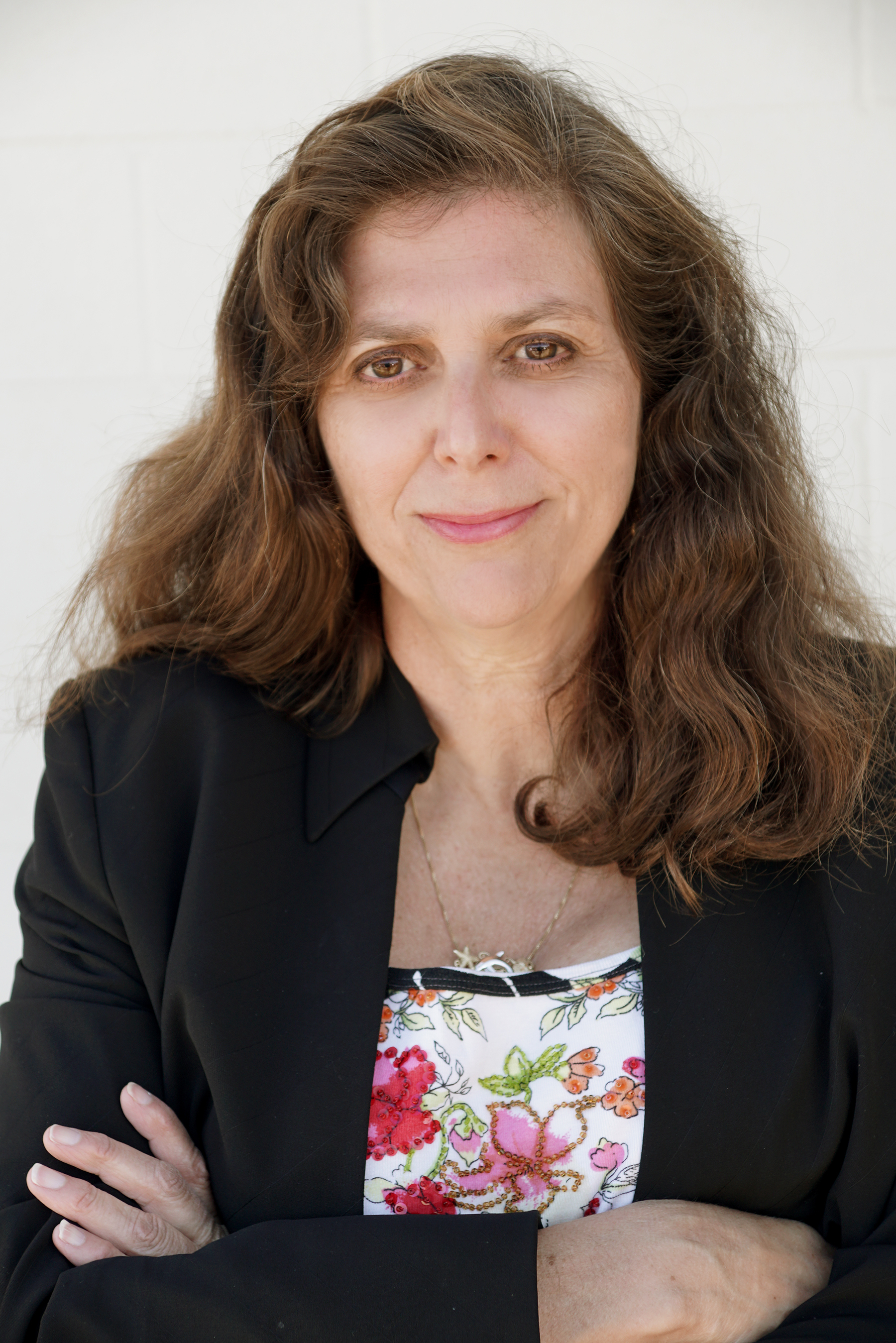
Marta Alvarez, PE, RCE & PLS
President
YCE Incorporated
Marta Alvarez is the CEO and founder of YCE, Inc., a consulting firm that has been located in Ventura since 1986. She is a dual licensed civil engineer and land surveyor in the state of California. She has expertise in storm drain systems, hydrology & hydraulics, erosion prevention, stormwater quality controls, and grading designs. Marta gives back to her profession by being a Subject Matter Expert for the development of the licensing exams. She also encourages and mentors young people in the careers of engineering and land surveying. Marta has a Bachelor of Science and a Masters in Business Administration degrees from California State University, Northridge. Among her many accomplishments, Marta has won numerous awards including Engineer of the Year, Project of the Year, and Innovator of the Year. Being a victim of the Thomas Fire of 2017 she has first hand knowledge of these types of events.
This event is worth one (1) Professional Development Hours.
IECA is committed to fostering an environment of continuous learning and professional growth. Through a process of peer review and content selection standards, we ensure that our content is robust, relevant, and aligned with industry standards. We respect the authority of certification organizations to evaluate and accept professional development activities according to their criteria, acceptance of professional development credits is at the discretion of your certifying organization.
-
Register
- Non member - Free!
- Professional member - Free!
- Professional Plus member - Free!
- Professional Plus Org member - Free!
- Student member - Free!
- Young Professional member - Free!
- Emeritus member - Free!
- Discounted Professional member - Free!
- Australia Member - Free!
- Australia Non-Member - Free!
- Australasia Professional Plus - Free!
- More Information
-
Register
-
Contains 4 Component(s), Includes Credits Recorded On: 2025/02/20
Traditional stormwater inspections are often time-consuming and inefficient, leading to compliance risks, costly delays, and regulatory penalties. This session will explore how AI and automation can streamline compliance workflows, reducing errors and improving efficiency. Stormwater and erosion control expert Jessica Acosta will break down the challenges of manual inspections and introduce AI-driven solutions designed to enhance accuracy and simplify compliance. Attendees will gain actionable insights on integrating digital tools into their existing workflows, ensuring smoother operations and regulatory adherence.
From Manual to Smart: Automating Stormwater Inspections with SmartComplAI
On-Demand
Presented by: Jessica Acosta, CISEC / CEO / Environmental Consulting Services
Level: Beginner
Duration: 1 hour
Type of Course: Webinar - LiveThe construction and environmental compliance industries are at a pivotal moment where outdated, manual stormwater inspection processes are causing costly delays, compliance risks, and inefficiencies. Despite the growing regulatory focus on stormwater management and erosion control, many companies still rely on paper-based inspections or fragmented digital tools that lack real-time insights and automation.
This presentation, "From Manual to Smart: Automating Stormwater Inspections with SmartComplAI," addresses these critical industry gaps by introducing a cutting-edge AI-powered solution designed to streamline stormwater compliance and inspections.
By showcasing how automation, AI-driven field assistance, and cloud-based compliance tracking can replace redundant, error-prone manual processes, this session will provide practical insights into:
✅ Bridging the knowledge gap on how AI and automation can enhance compliance.
✅ Demonstrating how real-time insights reduce regulatory risks and improve efficiency.
✅ Empowering professionals with tools that integrate seamlessly into existing workflows.
✅ Highlighting industry best practices for adopting smart compliance solutions.
The significance of this topic lies in its potential to revolutionize stormwater management, reduce compliance costs, and improve environmental outcomes—all while keeping construction projects on schedule. This session will equip stormwater professionals, environmental consultants, and contractors with actionable solutions to modernize their compliance approach and stay ahead in an evolving regulatory landscape.Learning Objective:
1️⃣ Understand the Limitations of Manual Stormwater Inspections
Attendees will be able to identify inefficiencies in traditional stormwater inspection processes, including common compliance risks, time delays, and cost implications of manual data collection and reporting.
2️⃣ Learn How Automation and AI Improve Stormwater Compliance
Participants will gain knowledge on how AI-powered tools, digital inspections, and automated reporting enhance accuracy, reduce regulatory risks, and streamline compliance workflows in stormwater management.
3️⃣ Implement Best Practices for Transitioning to Smart Compliance Solutions
Attendees will leave with actionable strategies to integrate AI-driven compliance tools into their existing inspection and reporting processes, improving efficiency while ensuring regulatory alignment and environmental stewardship.

Jessica Acosta, CISEC
CEO
Environmental Consulting Services
Jessica Acosta is the Founder and CEO of SmartComplAI, an innovative compliance technology company revolutionizing stormwater management, erosion control, and environmental compliance for the construction industry. With over 20 years of experience in construction, environmental compliance, and sustainability, Jessica has firsthand knowledge of the challenges contractors and regulatory agencies face in navigating complex stormwater regulations.
As a recognized industry expert and thought leader, she has dedicated her career to streamlining environmental compliance through cutting-edge AI-powered solutions. Under her leadership, SmartComplAI has developed intelligent automation tools that transform outdated, manual inspection processes into efficient, data-driven workflows—helping companies reduce compliance risks, improve efficiency, and drive sustainability. Jessica Acosta is a stormwater and erosion control expert with over 20 years of experience in environmental compliance, stormwater management, and sustainable construction practices. Throughout her career, she has worked closely with contractors, regulatory agencies, and environmental professionals to navigate the complex challenges of Stormwater Pollution Prevention Plans (SWPPPs), erosion control, and compliance inspections.
Recognizing the inefficiencies and challenges in traditional stormwater inspections, Jessica founded SmartComplAI, a new venture dedicated to leveraging AI and automation to modernize stormwater compliance. While SmartComplAI is in its early stages, it is built on Jessica’s extensive industry experience and a vision to replace outdated, manual inspection processes with smarter, data-driven compliance solutions. Jessica is passionate about bridging the gap between technology and environmental compliance, helping professionals adapt to evolving regulations and improve operational efficiency. In this session, she will share insights from her experience in the field, discuss the challenges of manual compliance processes, and introduce how emerging technologies like AI-powered automation can shape the future of stormwater management. Jessica is a passionate advocate for leveraging technology to create smarter, greener, and more cost-effective compliance solutions. She has presented at numerous industry conferences, sharing insights on AI, automation, and the future of environmental compliance in construction.This event is worth one (1) Professional Development Hours.
IECA is committed to fostering an environment of continuous learning and professional growth. Through a process of peer review and content selection standards, we ensure that our content is robust, relevant, and aligned with industry standards. We respect the authority of certification organizations to evaluate and accept professional development activities according to their criteria, acceptance of professional development credits is at the discretion of your certifying organization.
* EnviroCert International has listed this webinar as acceptable professional development.
-
Register
- Non member - $40
- Professional member - $15
- Professional Plus member - Free!
- Professional Plus Org member - Free!
- Student member - $15
- Young Professional member - $15
- Emeritus member - $15
- Discounted Professional member - $15
- Australia Member - $15
- Australia Non-Member - $40
- Australasia Professional Plus - Free!
- More Information
-
Register
-
Contains 4 Component(s), Includes Credits
Since being awarded the IECA educational award in 2022, the On-Country Soil Erosion and Sediment Control training has continued to deliver unique and geographically experiences across Queensland. The training has offered a safe, inclusive, and experiential learning base for its attendees that not only expanded upon the best practice principals and techniques from IECA but exposes all participants to landscape and cultural insights only available when leaving the classroom and walking Country. Shared and integrated knowledge of air, water, soil, vegetation, and people. The content delivery on Country takes an empowering shift away from a teacher to pupil model and embraced a collaborative and adaptive approach. This presentation will talk through our recent presentations, learnings and the next steps for the program.
Innovative Soil Erosion and Sediment Control Training: Embracing Cultural and Environmental Insights in Queensland, Australia
Presented by: Dallas Frazier. Environment Engineer, Fulton Hogan
Level: Intermediate
Duration: 1 hour
Type of Course: Webinar - On DemandSince being awarded the IECA educational award in 2022, the On-Country* Soil Erosion and Sediment Control training has continued to deliver unique and geographically experiences across Queensland. The training has offered a safe, inclusive, and experiential learning base for its attendees that not only expanded upon the best practice principals and techniques from IECA but exposes all participants to landscape and cultural insights only available when leaving the classroom and walking Country. Shared and integrated knowledge of air, water, soil, vegetation, and people. The content delivery on Country takes an empowering shift away from a teacher to pupil model and embraced a collaborative and adaptive approach. This presentation will talk through our recent presentations, learnings and the next steps for the program.
* The term "On-country" is often used in the context of Aboriginal and Torres Strait Islander peoples in Australia. It refers to being physically located on the traditional lands of their tribal groups. When someone is "on country," it means they are on the land that holds cultural, spiritual, and historical significance to their people. This connection to country is deeply rooted in their identity, culture, and way of life
For example, in the context of the On Country ESC Training programs, the term is used to describe training sessions that take place on the traditional lands of Indigenous peoples. These sessions offer a unique learning experience that integrates cultural and environmental insights, bridging knowledge about air, water, soil, vegetation, and people
Learning Objective:
- Understand and apply the best practice principles and techniques in soil erosion and sediment control by leaving the classroom and walking Country.
- Gain insights into the interconnectedness of air, water, soil, vegetation, and people through experiential learning on Country.
- Develop collaborative and adaptive approaches to learning by engaging with landscape and cultural insights outside the traditional classroom setting.

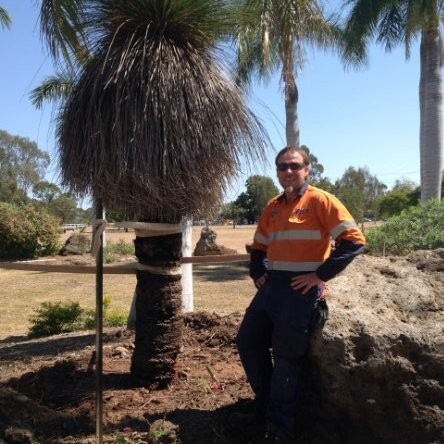
Dallas Frazier
Environmental and Sustainability Manager
Fulton Hogan Construction
Dallas is the Environmental and Sustainability Manager for the Fulton Hogan Construction and has a demonstrated history of working in the construction industry. He is a strong community and social services professional skilled in Environmental Issues, Erosion and Sediment Control, ISCA requirements, Biodiversity, Environmental Auditing, Environmental Awareness, and Construction.
This event is worth one (1) Professional Development Hours.
IECA is committed to fostering an environment of continuous learning and professional growth. Through a process of peer review and content selection standards, we ensure that our content is robust, relevant, and aligned with industry standards. We respect the authority of certification organizations to evaluate and accept professional development activities according to their criteria, acceptance of professional development credits is at the discretion of your certifying organization.
* EnviroCert International has listed this webinar as acceptable professional development.
-
Register
- Non member - $40
- Professional member - $15
- Professional Plus member - Free!
- Professional Plus Org member - Free!
- Student member - $15
- Young Professional member - $15
- Emeritus member - $15
- Discounted Professional member - $15
- Australia Member - $15
- Australia Non-Member - $40
- Australasia Professional Plus - Free!
- More Information
-
Contains 4 Component(s), Includes Credits Recorded On: 2025/01/23
Water quality and detention are becoming increasingly necessary to ensure the health and safety of our communities. Texas has beautiful and unique natural environments which include endemic and endangered species, parks, lakes and spring fed rivers that are used for recreation. With Texas growing at a substantial rate, it is imperative that we prevent pollution for our community and environment. The City of San Marcos developed a routine inspection program for permanent stormwater detention and water quality controls. If these controls are operating as designed, they will improve water quality in our waterbodies and help decrease flash flooding.
Pond Patrol: Ensuring Water Quality with Inspection
On-Demand
Presented by: Rachel Henderson, Stormwater Technician & Alexandra O'Connor, Stormwater Coordinator | City of San Marcos
Level: Intermediate
Duration: 1 hour
Type of Course: Webinar - LiveStructural Controls are implemented to manage flooding and maintain water quality within urban watersheds, however they require routine inspections and maintenance to function as designed. The City of San Marcos implemented a successful inspection/maintenance program on a shoe- string budget, and our program has inspired other cities in Texas to start their own. In 2016, the San Marcos City Council passed an ordinance which included Section 86.531- Maintenance and Repair of Structural Controls, laying the groundwork for what would become our Post Construction Structural Control Inspection Program. The ordinance reinforced our city’s requirement for all existing and new Stormwater Management Structural Controls on private and city owned property to be inspected annually by a pre-qualified engineer. In 2020, the ordinance was updated from annual to triennial (once every three years) inspections.
The decision to have a ‘hybrid’ style inspection program was based on the procedures of larger city’s but with concessions made for our existing personnel and budget constraints. Our experiences in developing and launching this program without a clear playbook has been challenging and ever evolving. However, after seven years of administering this program our department has learned several lessons that could be helpful for other municipalities of comparable size to tackle this type of project. By sharing our challenges and solutions, we hope to help other cities with alternatives for these type of inspection programs that can better fit a smaller city’s budget.
Learning Objective:
- Attendees will learn how to develop a structural control (water quality and detention) inspection program.
- This inspection program was designed to be implemented with municipal budgets and limited resources.
- A city-wide structural control inspection program must gain support from the community and municipal decision makers. Attendees will learn how to promote a structural control inspection program by focusing on public and environmental health and safety.

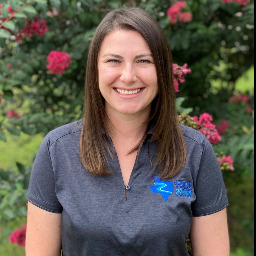
Alexandra O'Connor
Stormwater Coordinator
City of San Marcos
Alex O’Connor is a CISEC (#2145) with over 15 years of experience in environmental compliance focused on stormwater management and the Texas Pollutant Discharge Elimination System (TPDES) permitting. Alex works for the City of San Marcos as the Stormwater Coordinator where she manages the City’s Phase II Small Municipal Separate Storm Sewer System (MS4) permit. Alex has extensive experience in stormwater inspections, best management practices, chemical wastes, Tier II reporting, spill response, Spill Prevention Control and Countermeasure (SPCC) plans, Phase I and II Environmental Site Assessments and Geologic Assessments.

Rachel Henderson
Stormwater Technician
City of San Marcos
Rachel Henderson is a CISEC (#3854) and holds a bachelor’s degree in Resource and Environmental Studies from Texas State University. She currently works for the City of San Marcos as a stormwater technician where she assists in managing and implementing the City’s Phase II Small Municipal Separate Storm Sewer System (MS4) permit. Her specialties include stormwater compliance operations, GIS applications, state and federal environmental regulations including stormwater inspections, best management practices, spill response and Spill Prevention Control and Countermeasure (SPCC) plans.
This event is worth one (1) Professional Development Hours.
IECA is committed to fostering an environment of continuous learning and professional growth. Through a process of peer review and content selection standards, we ensure that our content is robust, relevant, and aligned with industry standards. We respect the authority of certification organizations to evaluate and accept professional development activities according to their criteria, acceptance of professional development credits is at the discretion of your certifying organization.
* EnviroCert International has listed this webinar as acceptable professional development.
-
Register
- Non member - $40
- Professional member - $15
- Professional Plus member - Free!
- Professional Plus Org member - Free!
- Student member - $15
- Young Professional member - $15
- Emeritus member - $15
- Discounted Professional member - $15
- Australia Member - $15
- Australia Non-Member - $40
- Australasia Professional Plus - Free!
- More Information

